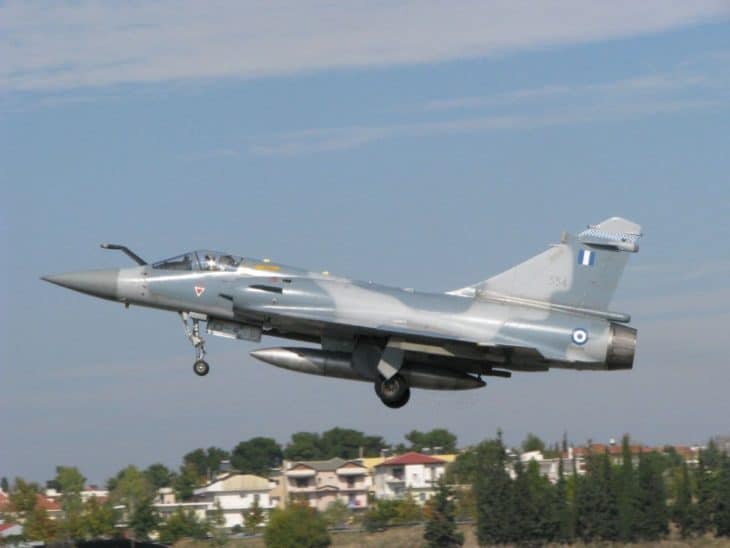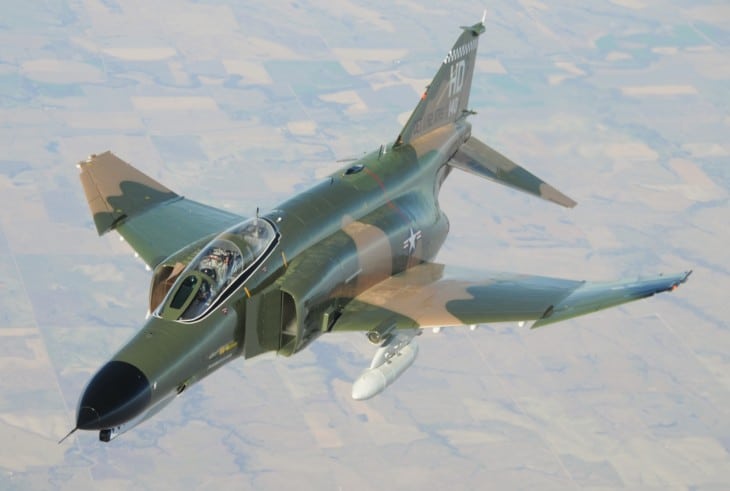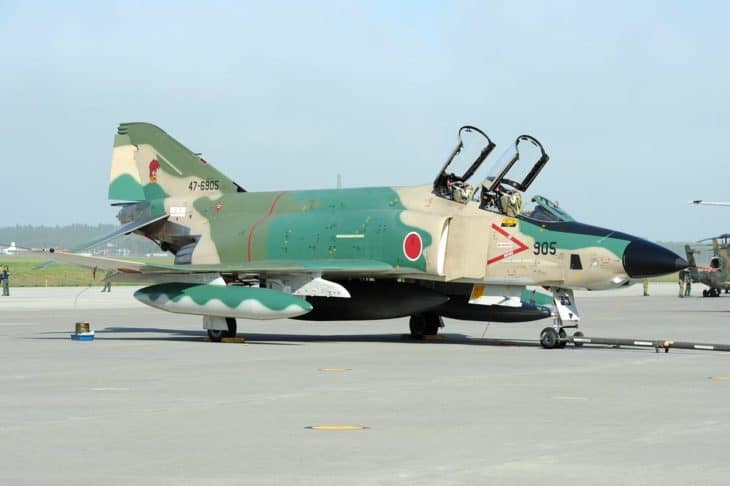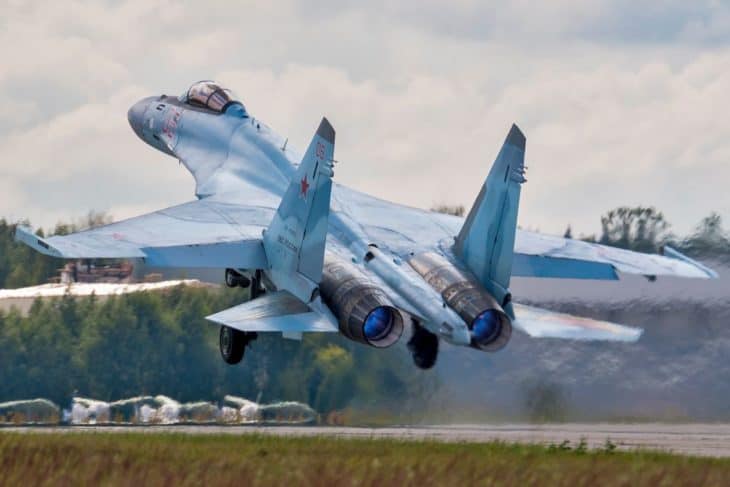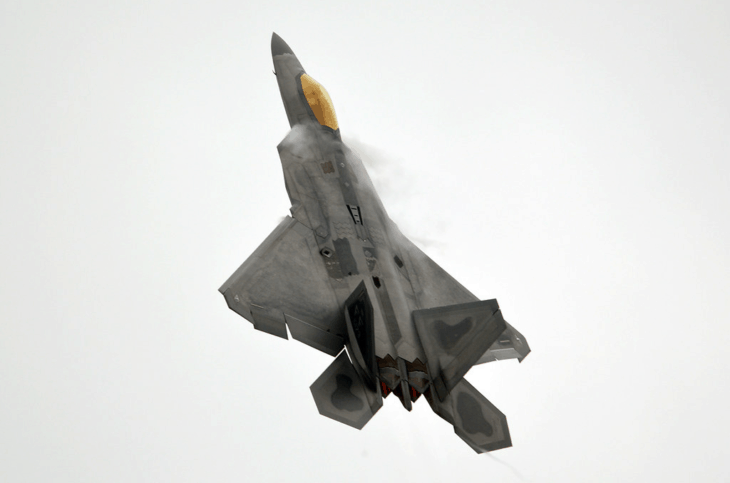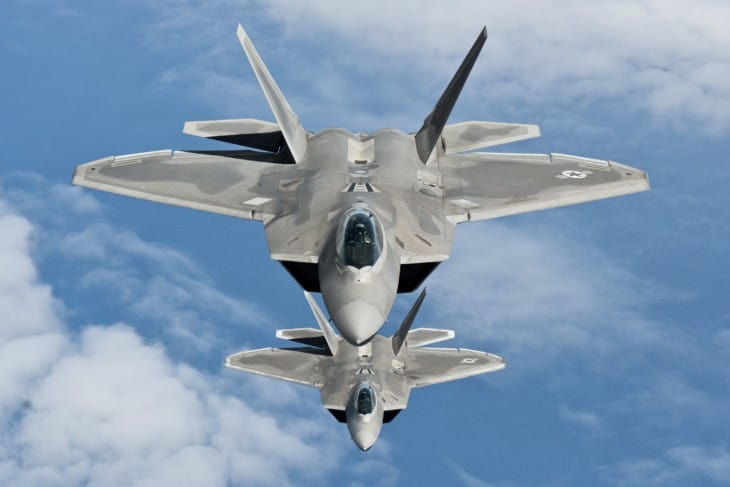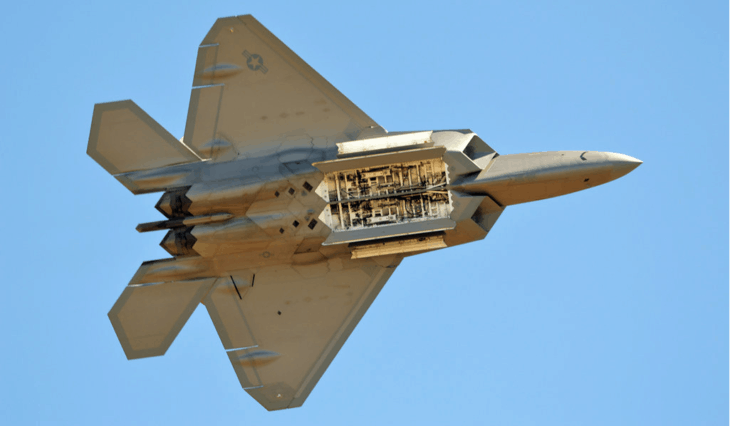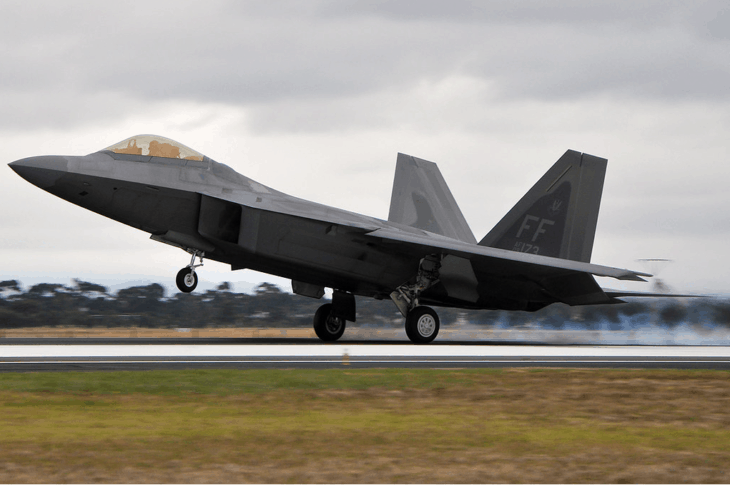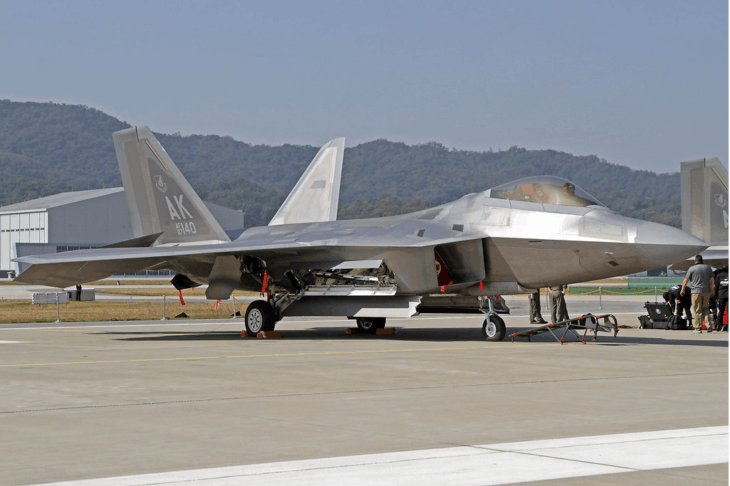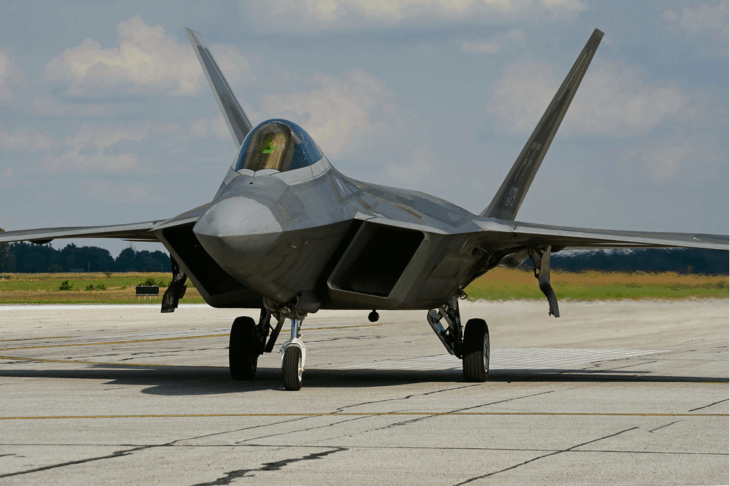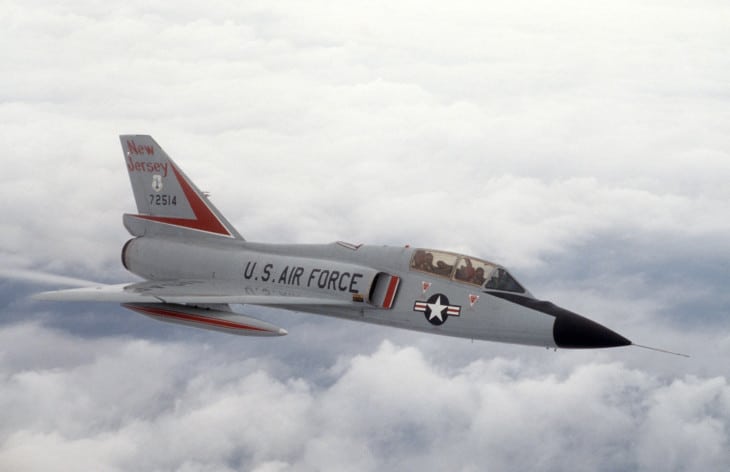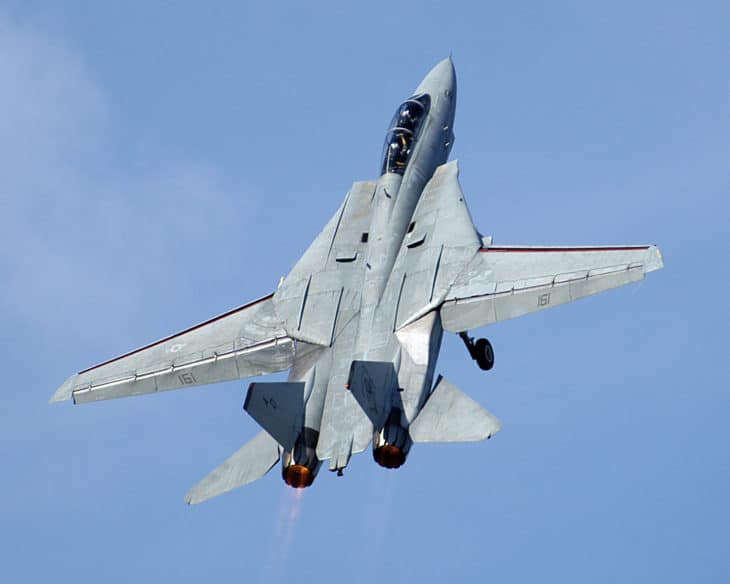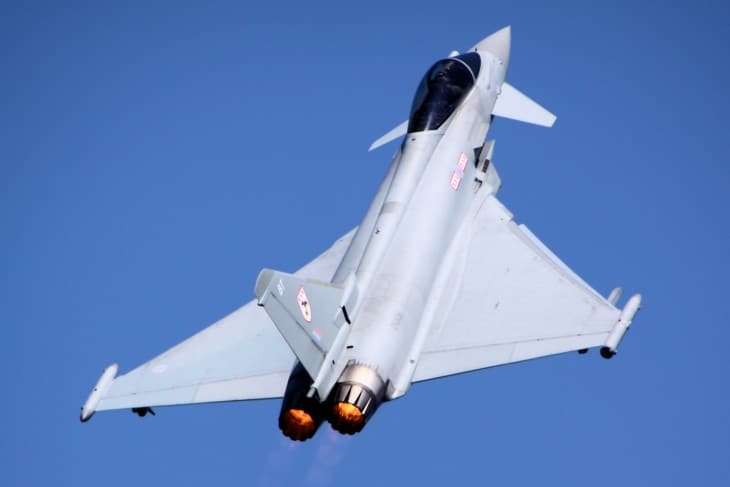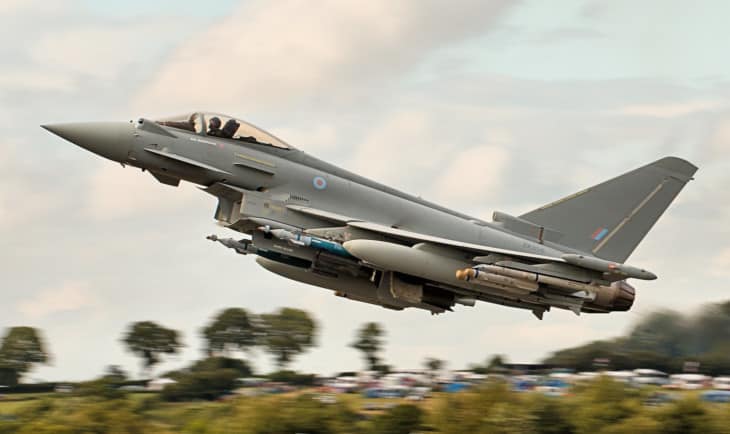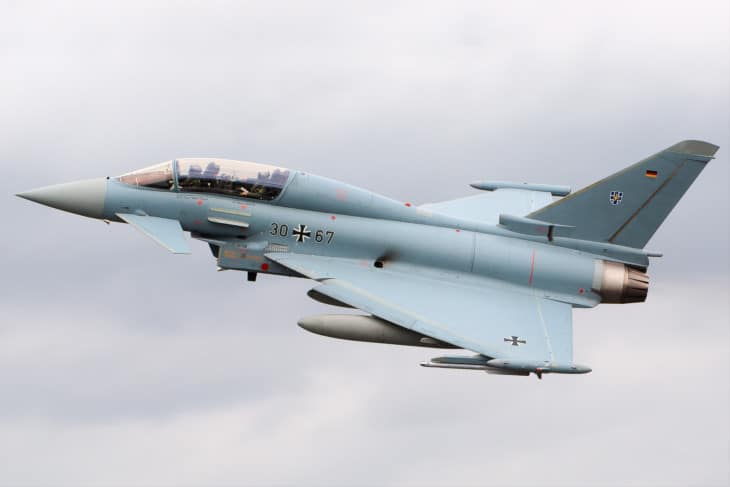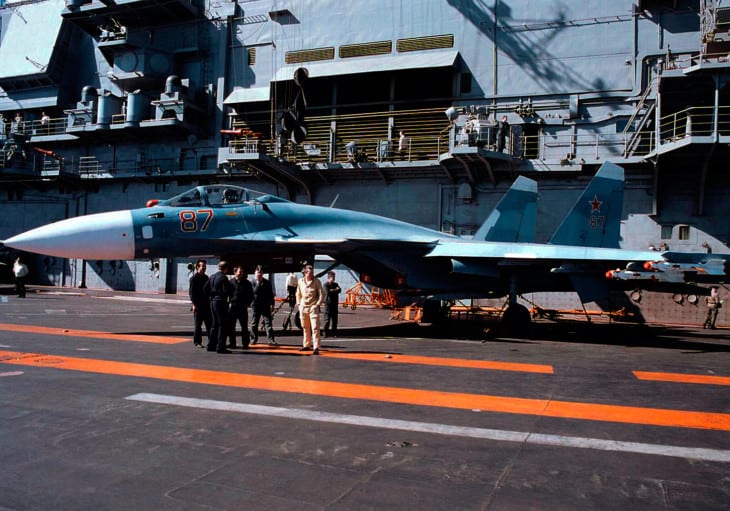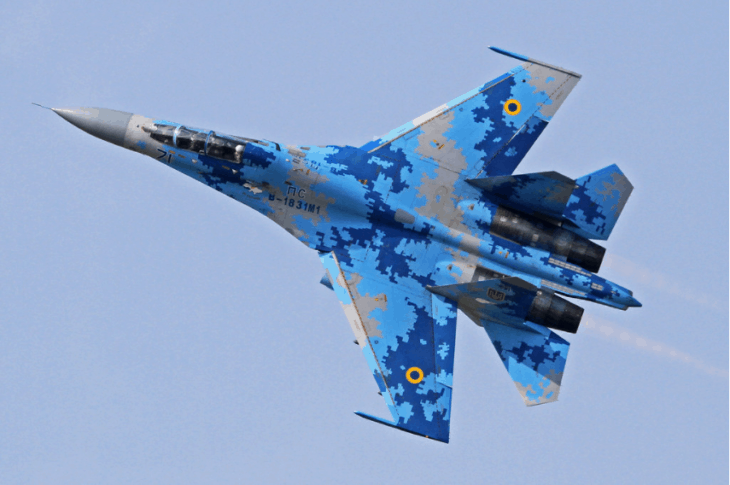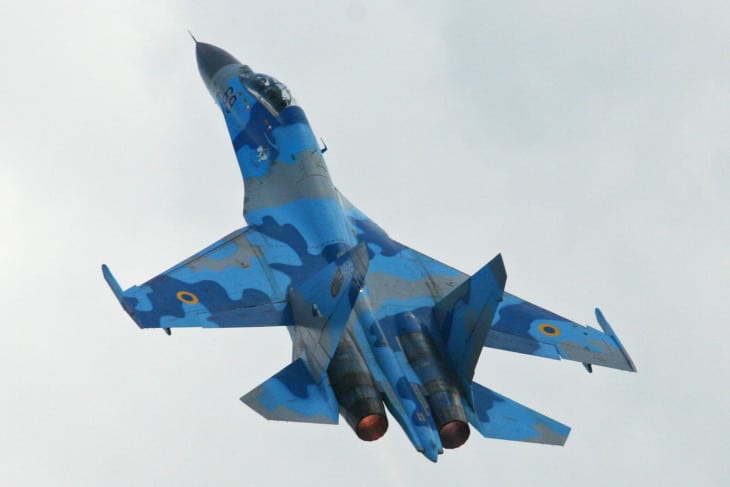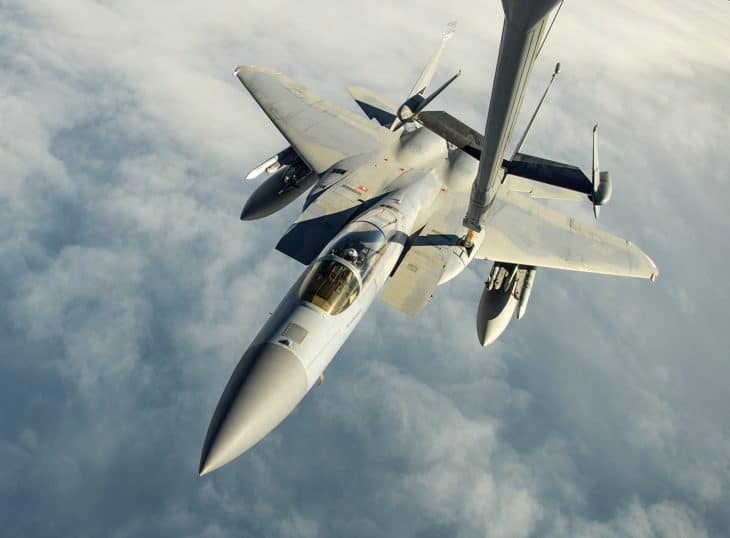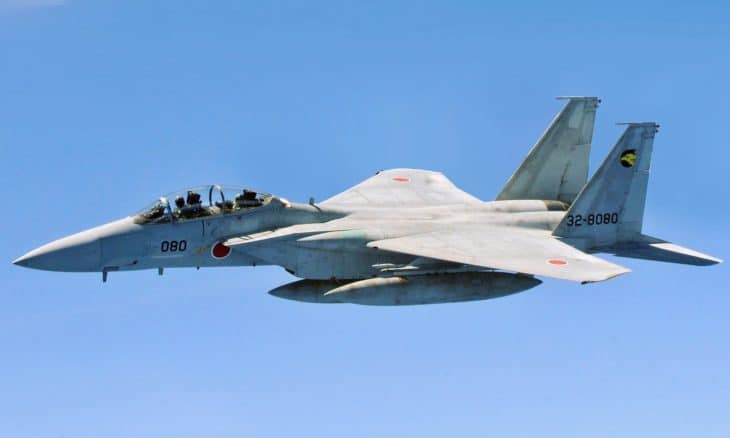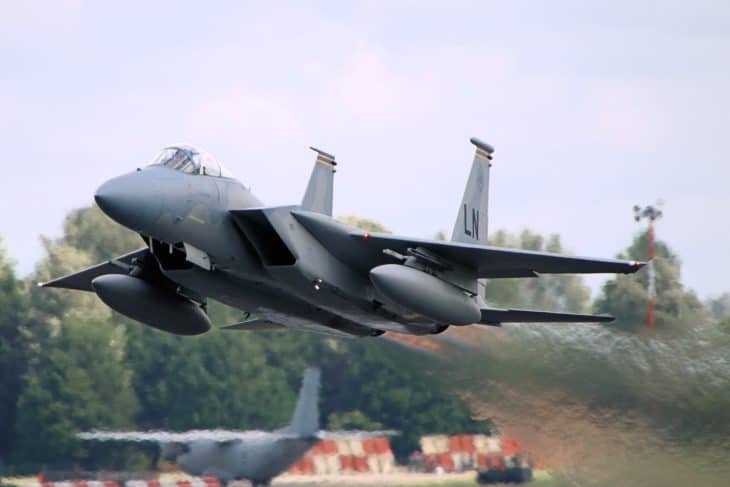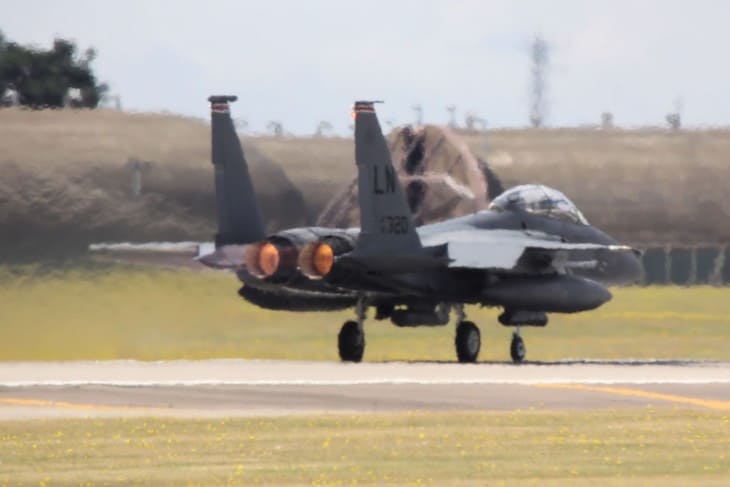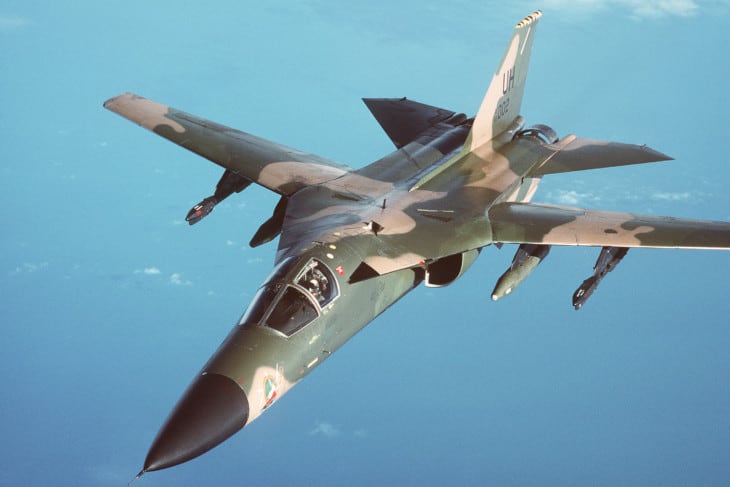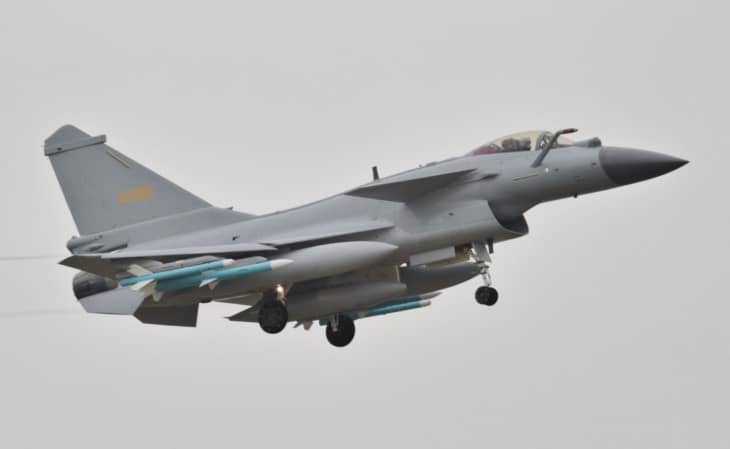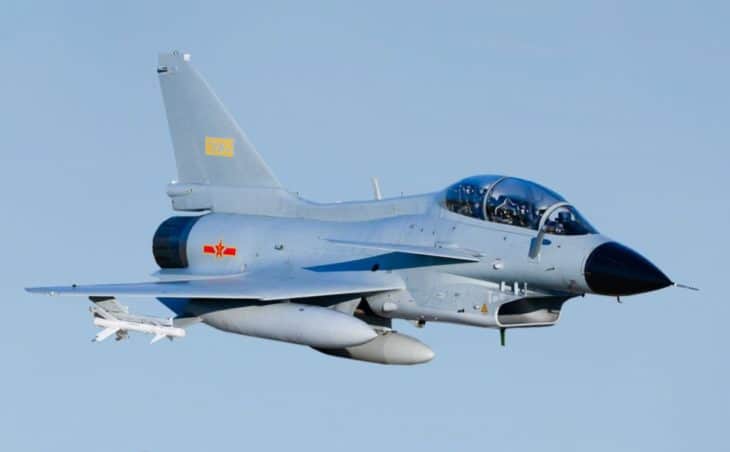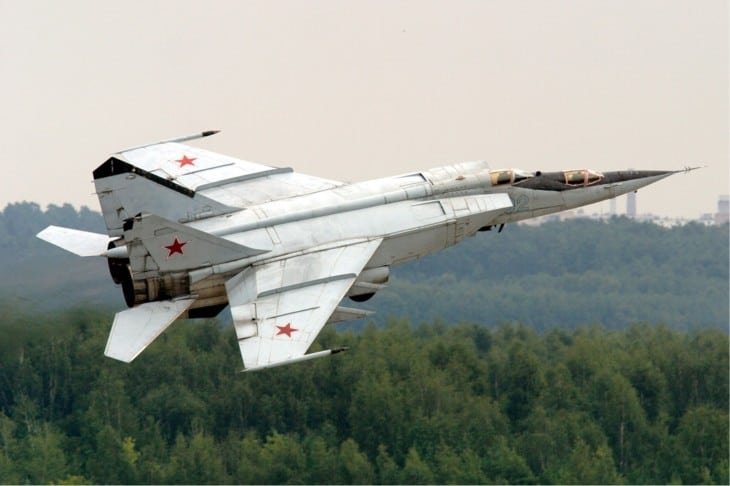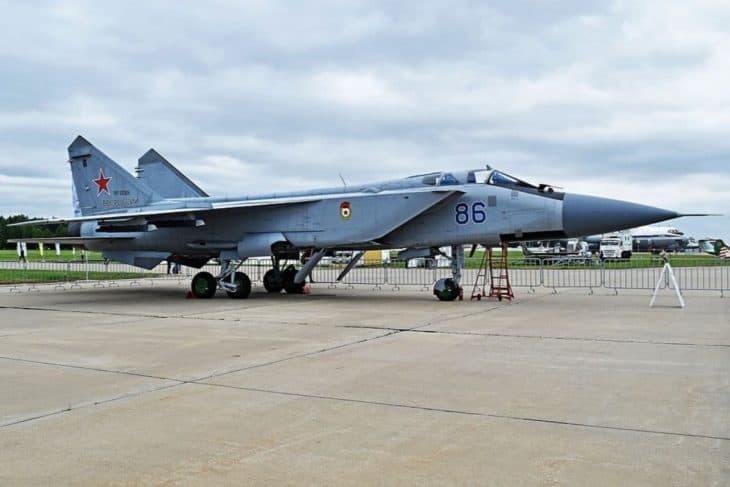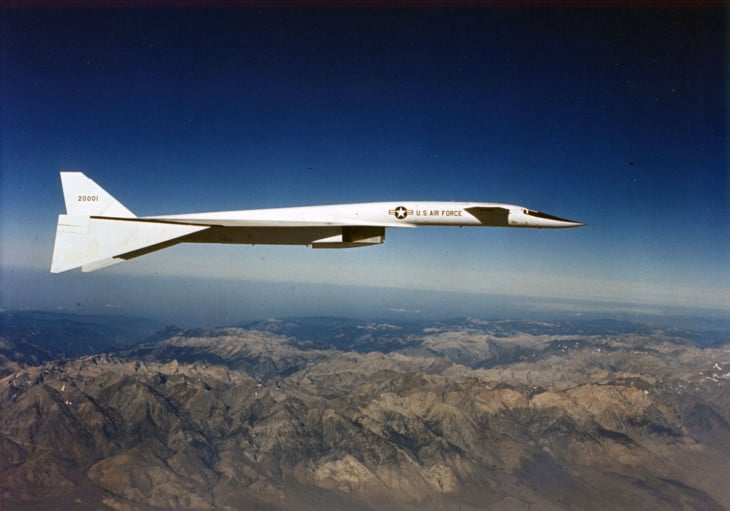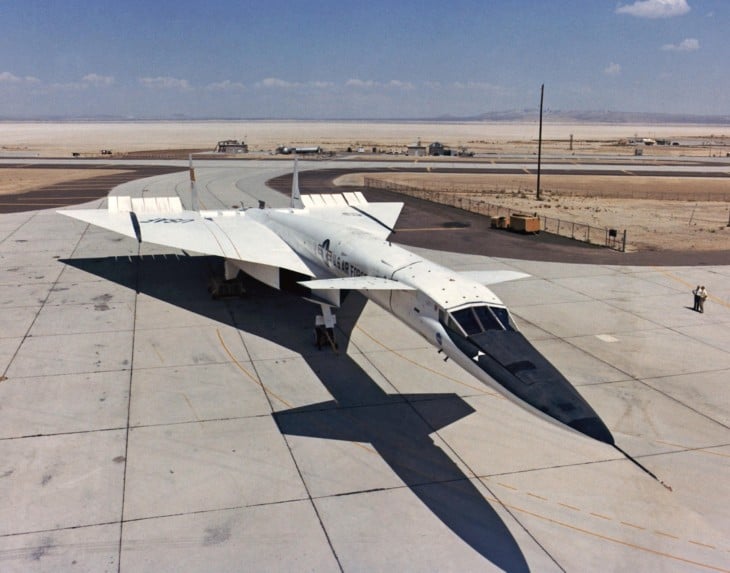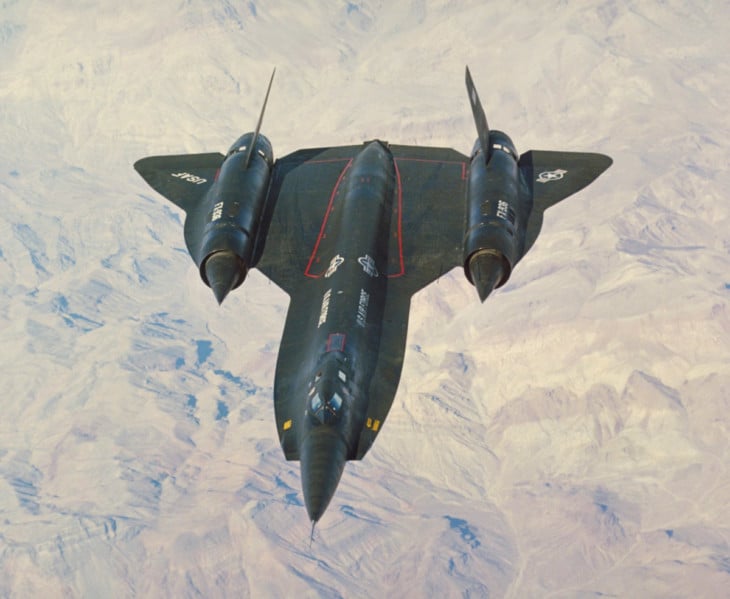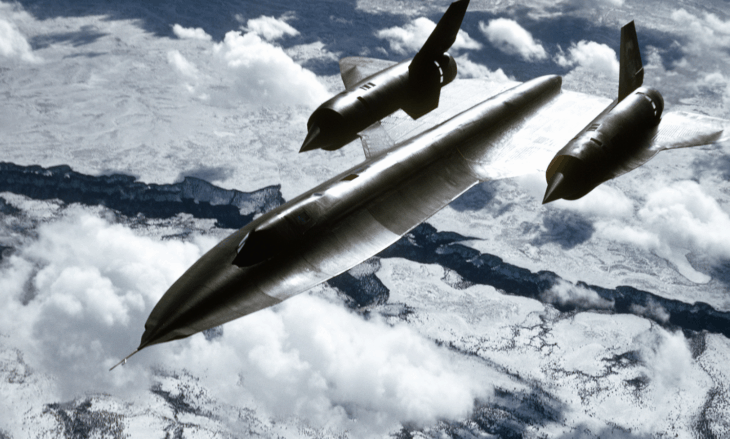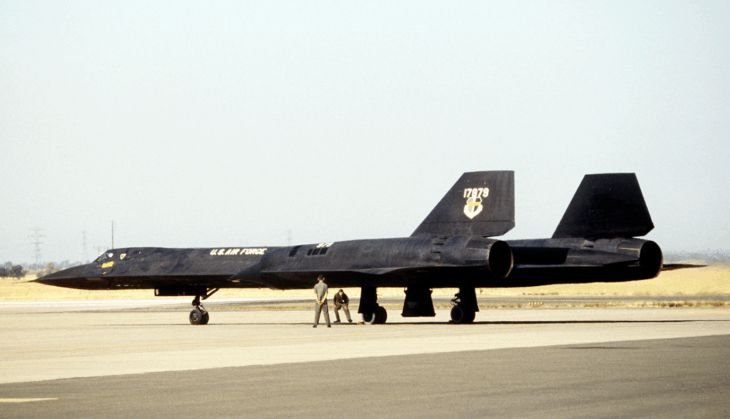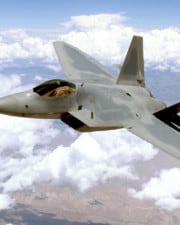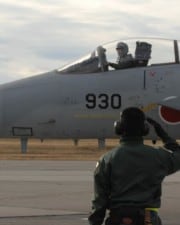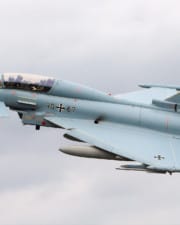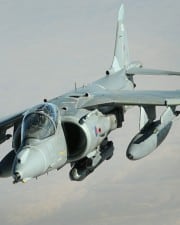Do you have a need for speed? Have you ever wondered about the incredibly fast war machines that are fighter jets? If so, then get ready because we’re taking off into the world of aviation with our look at the 18 fastest and most powerful fighter jets ever made. From proven planes like the American F-15 Eagle and Russia’s modern Su-57, to experimental aircraft like the X-15, these incredible fighter aircraft push the boundaries of speed and agility.
Fighter jets depend on speed for survival. If your fighter aircraft doesn’t move as fast as the enemy’s, there can be grave consequences. In light of such a basic understanding, jet engineers are continually trying to outdo each other to release the fastest fighter plane possible.
The following is a list of the top 18 fastest fighter jets in the world. Please note that this list is ordered purely by top speed of these fighter jets. It does not reflect on other factors such as maneuverability, age, or usability. Some of these planes only ever existed as experimental aircraft.
Also note that the performance numbers are often released by official government channels, which may have an agenda… I’ll leave it at that. Anyway, these are the 18 fastest fighter jets as recorded publicly.
18. Dassault Mirage 2000 (1,453 mph)
More info: Dassault Mirage 2000 5Mk2
- Top Speed: 1,453 mph / 1,261 knots / 2,336 kmh at altitude
- Max Range: 960 mi / 840 nmi / 1,550 km
The Mirage 2000 is also a multirole fighter jet that is made in France by Dassault. As other countries battled for air supremacy, France realized that it also needed a super plane to even the playing field. This is what led to the creation of the Mirage 2000N and 2000D.
Initially, they meant for the Mirage 2000N to be a fast attack nuclear weapon while the Mirage 2000D interdicted and engaged enemies in the air. However, when the Mirage 2000 finally hit the air in the early ’80s, they realized that it was better equipped for fast attacks characterized by dropping precision ordinance from long distances. The Mirage was able to approach a top speed of Mach 2 speed while loaded with guided bombs and air-to-air missiles.
17. McDonnell Douglas F-4 Phantom II (1,472 mph)
More info: McDonnell Douglas F-4 Phantom II
- Top Speed: 1,472 mph / 1,280 knots / 2,379 kmh at altitude
- Max Range: 1,677 mi / 1,457 nmi / 2,699 km
The McDonnell Douglas F-4 Phantom II is truly the stuff of legend. From its battles in Vietnam to modern-day warfare, the F-4 has proven itself to be a worthy adversary.
Designed in the early ’60s, the F-4 quickly wrecked all airspeed records that were at that moment. Not only was it efficient at outrunning enemy jets, but also at outfighting them as well.
This two-seat, two-engine fighter jet was able to survive multiple generations of super jets, with the last one retiring in 2013. Due to its efficiency, it became the go-to jet for the US army when it needed to show its enemies a devastating show of force at the frontlines.
16. Sukhoi Su-35 Flanker-E (1500 mph)
More info: Sukhoi Su-35
- Top Speed: 1,500 mph / 1,300 kn / 2,400 kmh / M2.25 at altitude
- Max Range: 2,200 mi / 1,900 nmi / 3,600 km
The Sukhoi Su-35 Flanker-E is improved development of the Su-27. Originally it was known ad the Su-27M. After the Soviet Union collapsed, the Soviets were looking for ways to export their technological advancements to the world. They decided to rebrand the aircraft as Su-35.
The Su-35 made its first flight in June of 1988. The original version was produced from 1987 to 1995. While awaiting the development of the Sukhoi Su-57, Sukhoi decided to develop an interim aircraft which would be a modernized version of the Su-27M. This aircraft would be known as the Su-35S and is produced from 2007 to this day.
The type has proved a popular option for Russia, as well as China and Indonesia who have also placed orders. The refurbished Su-35 has a redesigned cockpit, better weapon systems and sports thrust vectoring jet engines.
15. Lockheed Martin F-22 Raptor (1500 mph)
More info: Lockheed Martin F-22 Raptor
- Top Speed: 1,500 mph / kn / 2,414 kmh / M2.25 at altitude
- Max Range: 1,800 mi / 1,600 nmi / 3,000 km
The F-22 is a favorite of many aerospace enthusiasts and for good reason. The development of the F-22 brought about many technological advancements in terms of stealth, aerodynamic performance, and avionics systems.
The F-22 was primarily designed to be an air superiority fighter, but being the versatile aircraft it is, can also be used as ground attack, electronic warfare and intelligence gathering capabilities.
Many people would consider the F-22 as the flagship fighter jet of the United States Air Force. The USAF had originally intended to buy a total of 750 units. However that plan was revised in 2009 due to a number of reasons, most importantly due to lagging developments of Russian and Chinese counterparts. Another reason for the halted production was the focus on the newly developed F-35, and the ban on exports of this aircraft.
14. Convair F-106 (1,526 mph)
More info: Convair F-106 Delta Dart
- Top Speed: 1,526 mph / 1,325 knots / Mach 2.3
- Max Flight Distance: 2,346 nmi / 2,700 mi / 4,345 km
The F-106 is among the rare breed of first-generation fighter jets. Despite its legendary status, the F-106 would be the last fighter jet to prioritize speed over visibility in air-to-air combat. In fact, this is what led to the development of the F-4 Phantom. The Phantom has better radar technology and could carry more weapons.
However, when it came to raw speed and maneuverability, the F-106 was superior. Nonetheless, this super jet only tasted service briefly, and never saw combat officially. It was mostly used to test the limits for what a fighter-bomber in the ’50s was truly capable of.
13. Grumman F-14 Tomcat (1544 mph)
More info: Grumman F-14 Tomcat
- Top Speed: 1,544 mph / 1,342 kn / 2,485 kmh / M2.34 at altitude
- Max Range: 1,800 mi / 1,600 nmi / 3,000 km
The Grumman F-14 was developed building on knowledge gained during the Vietnam war, where American fighters combatted against MiG fighters. The F-14 first entered service in 1974 with the U.S. Navy, replacing the F-4 Phantom.
The F-14 proved to be a versatile fighter jet, and served in multiple roles, first and foremost as air superiority fighter and supersonic interceptor. The aircraft served the U.S. Navy for 32 years, from 1974 to 2006, and that alone is a testament to the success of this craft.
The model is still in service with other countries air forces, notably the Iranian Air Force. In 2015, Iranian F-14s were reportedly flying escort for Russian bombers on air strikes in Syria. Iran is the last nation to keep F-14s in service, having updated them with their own domestic avionics that would keep them in service until 2030.
12. Eurofighter Typhoon (1544 mph)
More info: Eurofighter Typhoon T1
- Top Speed: 1550 mph / 1347 kn / 2495 kmh / M2.0+ at altitude
- Max Range: 1,800 mi / 1,600 nmi / 2,900 km
The Eurofighter Typhoon is a multirole jet fighter developed in a multinational collaboration of the UK, Germany, Spain and Italy. The Typhoon made its first flight on 27 March 1994.
The Typhoon entered service in 2003 and is now in service by many nations across the world, particularly European and Gulf countries. There is a total of around 600 units built.
The Typhoon was designed to be an incredibly effective fighter in air to air combat missions. The Typhoon takes care of aerial reconnaissance, ground strike missions and other air defense duties.
11. Sukhoi Su-27 Flanker (1600 mph)
More info: Sukhoi Su-27 “Flanker”
- Top Speed: 1,600 mph / 1,300 kn / 2,500 kmh / M2.35 at altitude
- Max Range: 2,190 mi / 1,910 nmi / 3,530 km
The Su-27 is a Russian fighter jet designed by Sukhoi. It was designed to counter the American made F-14 Tomcat and F-15 Eagle. It is intended for air superiority missions, and proved to be a versatile fighter jet.
The Su-27 entered service in the former Soviet Union Air Force in 1985. The main purpose was to defend the borders of the Soviet Union against American B-52 and B-1B bombers, as well as escorting Soviet Air force bombers.
The Su-30, Su-33, Su-34, Su-35 are all derivatives of the Su-27 design. The Chinese Shenyang J-11 is a license built version of the Su-27.
The craft is produced from 1982 to this day, and is in service primarily wit the Russian Air Force, Chinese PLA Army Air Force, Uzbekistan Air and Defence Force, among others.
10. McDonnell Douglas F-15 Eagle (1650 mph)
More info: McDonnell Douglas F-15 Eagle
- Top Speed: 1,650 mph / 1,434 kn / 2,655 kmh / M2.5 at altitude
- Max Range: 3,500 mi / 3,000 nmi / 5,600 km
The F-15 is produced starting in 1972 and is still produced today. The F-15 Eagle is one of the most successful fighter jets ever built. It has over 100 victories and no losses to its name, mostly accomplished by the Israeli Air Force. The F-15 is developed and made in America, but has been exported to Israel, Saudi Arabia and Japan.
The F-15 was originally designed purely as an air superiority fighter but the design proved versatitle enough to be developed into a strike fighter in the form of the F-15E Strike Eagle.
The F-15 Eagle surely deserves a place on the list of fastest fighter jets in the world as it has a recorded top speed of 1650 miles per hour at altitude.
9. General Dynamics F-111 Aardvark (1650 mph)
More info: General Dynamics F-111 Aardvark
- Top Speed: 1,650 mph / 1,434 kn / 2,656 kmh / M2.5 at altitude
- Max Range: 3,690 mi / 3,210 nmi / 5,940 km
Aardvark means (earth)pig in Afrikaans, and that’s what the aircraft is often called in the U.S. Military. The F-111 is definitely no pig when it comes to performance though, and is able to reach max speeds of 1650 miles per hour.
One of the most characterizing features of the F-111 Aardvark is the variable-sweep wings. Variable wings offer higher speed and maneuverability wit heavy payloads while still retaining the ability to take off and land on shorter runways.
The F-111 was introduced in 1967 and remained in active service until 1998 in the U.S. Air Force. The Aardvark was operated mainly by the U.S. Air Force and the Royal Australian Air Force. The latter finally retired the aircraft in 2010.
8. Chengdu J-10 (1,687 mph)
More info: Chengdu J-10 Vigorous Dragon
- Top Speed: 1,687 mph / 1,466 knots / Mach 2.2 at altitude
- Max Range: 2,000 mi / 1,700 nmi / 3,200 km
The Chengdu J-10 is a Chinese multirole fighter jet that NATO fondly refers to as the Firebird. The Firebird is China’s fastest combat aircraft and thus, is a prominent figure in the People’s Liberation Army Air Force. It is designed and manufactured by the Chengdu Aircraft Corporation (CAC).
The People’s Liberation Army Air Force introduced the J-10 into service in 2003, after its initial test flight in 1998. In the beginning, the CAC meant for the J-10 to be a specialized fighter. However, after the initial tests and design changes, the J-10 was converted into a multirole aircraft.
Even though there were only 350 J-10s built, the Chengdu J-10 remains China’s fastest and most popular jet fighter.
7. Mikoyan MiG-25 Foxbat (1,900 mph)
More info: Mikoyan MiG-25 Foxbat
- Top Speed: 1,900 mph / 1,600 kn / 3,000 kmh / M2.83 at altitude
- Max Range: 1,160 mi / 1,000 nmi / 2,575 km
As NATO’s F-4 Phantom II was flexing its wings as the most dangerous aerial combatant in the world, the Soviet Union was in the lab cooking up a worthy adversary for the Phantom: the MiG-25 Foxbat.
As you can imagine, the Foxbat was designed for extreme speed and super-maneuverability. When the MiG-25 hit the skies in 1964, you could have picked NATO’s jaws off the floor. The F-4 was undoubtedly the king of the heavens at that time, but it had met its match.
The two fighter jets went toe-to-toe over Northern Vietnam, with none coming off as superior to the other. The MiG-25 is a true engineering marvel considering its exemplary performance coupled with affordability.
To this day, the MiG-25s are still in service even though most of them have been upgraded into the MiG-31.
6. Mikoyan MIG-31 Foxhound (1,900 mph)
More info: Mikoyan MIG-31E Foxhound
- Top Speed: 1,900 mph / 1,600 kn / 3,000 kmh / M2.83 at altitude
- Max Range: 1,900 mi / 1,600 nmi / 3,000 kmh
The MIG-31 had everyone in utter shock back in 1977 when it reached an all-new altitude record of 123,530 feet. Is also simultaneously set a new record for the most height reached in the least time at 115,000 feet in just 4:11:78 minutes.
Such stellar records led to the Soviet Union to adopt the Mikoyan Gurevich MIG-31 as its premier jet fighter at the time. Additionally, it was also the first among the generations of jets that were able to use radar to detect and intercept stealth fighters.
Consequently, the development of the MIG-31 marked the first strike in the new wave of air superiority contests between NATO and the Soviet Union. This aircraft could get to altitude in record time, stay in the air for lengthy periods, lock onto both conventional and stealth crafts, and unleash long-range, radar-guided missiles.
Those attributes are still effective even in today’s air contests. The Russian MIG-31 is expected to remain in service until 2030.
5. Mikoyan Ye-152 (1,883 mph)
More info: Mikoyan-Gurevich Ye-152
- Top Speed: 1,883 mph
- Max Flight Distance: 913 miles
At the height of the Cold War, the Soviet Union designed two single-engine fighter jets in a bid to claim airspeed superiority. As such, the purpose was to see what the limits were in world air-speed records.
The principle was fundamental back then. It was who could get to a location first, drop their loot, and get away unscathed. The Ye-152 showed a lot of promise as the solution to NATO’s F-100, F-101, and the F-106. Nonetheless, the Ye-152 was all flash but no cash. Sure, it could achieve dizzying speeds of up to Mach 2.8+; however, its engine reliability and combat viability left a lot to be desired.
As such, the Soviet Union figured that the Ye-150 family was better suited to having two engines rather than one. This led to the development if the Ye-152A, which used an R-11 twin turbojet design that proved to be a lot more reliable. The Ye-152A was better equipped at withstanding the stresses of sustained supersonic flight.
Sadly, a crash in 1995 led to the demise of the Ye-152A test craft.
4. North American XB-70 Valkyrie (2,050 mph)
More info: NAA XB-70 Valkyrie
- Top Speed: 2,050 mph
- Max Flight Distance: 3,725 miles
Performance aside, the XB-70 has to be one of the most aesthetically pleasing fighter crafts ever designed. Also, its legacy would end up being something entirely different from what it was intended to do.
Originally, the XB-70 was designed to be the most lethal manned-strategic-bomber known to man. This involved cruise speeds of up to Mach 3 at altitudes of around 70,000 feet. The bomber’s design not only looked good but also had an innovative wing structure that would allow it to perform as a true marvel of engineering.
In the meantime, however, there was another aviation sector that was drawing a lot of attention as well, and it was known as supersonic transport. Incidentally, it just so happened that the XB-70’s size and material were just what was needed for testing supersonic transport.
As a result, the XB-70’s purpose changed from that of a lethal bomber to a research aircraft. Its initial test flights proved to be a source of invaluable information for supersonic transport designers.
Unfortunately, these tests resulted in two casualties, which cast a dark cloud over the program. Nonetheless, the XB-70 Valkyrie remains one of the baddest research aircraft ever designed.
3. The Lockheed YF-12 (2,275 mph)
More info: Lockheed YF-12
- Top Speed: 2,275 mph
- Max Flight Distance: 3,000 miles
The Lockheed YF-12 definitely deserves its position in the jet fighter hall-of-fame as the legendary SR-71 Blackbird draws its inspiration from it.
Upon its release in the early ’60s, the YF-12 quickly dismantled any pre-existing flight records. However, there was so much secrecy shrouding the YF-12 program that people didn’t realize that it was the first actual test of stealth technology.
The YF-12’s mission was to make science-fiction a reality through attaining speeds of Mach 3+. Nonetheless, the program was defunded, and the YF-12 was designated to be a high-altitude recon aircraft. Fortunately, however, it provided the blueprint for the SR-71.
2. Lockheed SR-71 Blackbird (2,500 mph)
More info: Lockheed SR-71 Blackbird
- Top Speed: 2,500 mph
- Max Flight Distance: 3,337 miles
Ask any aerospace enthusiast, and they will tell you that the SR-71 blackbird is among their most favorite fighter jets, and with good reason; it is in a class of its own.
The Blackbird has not only blown away world air-speed records time and time again, but it has also won multiple awards for achievements in aeronautic design, performance, and versatility.
The SR-71 is a stealth fighter and reconnaissance aircraft that can barely be seen, let alone hit. The only military jet that comes close is the Soviet MiG-25 Foxbat, and even it has an incredibly difficult time keeping up with the undisputed king of fighter jets.
1. North American X-15 (4,520 mph)

- Top Speed: 4,520 mph (Mach 6.70)
- Max range: 280 Miles (450 km, 240 nmi)
The North American X-15 is a hypersonic rocket plane that was part of the US Air Force and NASA’s X-plane program. It set altitude and speed records in the 1960s, even reaching the edge of outer space, giving us important data for designing planes and spacecraft.
The highest recorded speed of the X-15 was Mach 6.7, or 4,520 mph (7,274 km/h; 2,021 m/s), achieved on 3 October 1967 by William J. Knight. It flew at an altitude of 102,100 feet (31,120 m), which is 19.34 miles above the Earth’s surface and still holds the record for the highest speed ever flown in a piloted aircraft.
The NASA/USAF X-15 rocket plane was designed to explore the boundaries of aeronautic technology and push the limits of airspeed. The result was an absolute marvel that set a new standard in flight performance.
It was also the world’s first spaceplane, reaching altitudes of over 400,000 feet and effectively becoming the first plane to breach into outer space. The X-15 revolutionized aviation and set the stage for the development of modern aircraft and spaceflight. It is truly an aviation marvel.
While it has been out of service since 1968, its legacy still lives on today, inspiring generations of aerospace engineers to create ever more advanced technologies and designs. The X-15 will forever be remembered as a pioneer in speed and aeronautic technology.
Related Posts
















